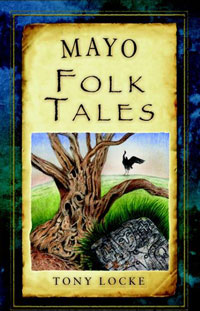


The rural value of eggs.
Years ago the humble egg was a very valuable part of the rural economy of Ireland.
Every farmyard was home to a few chickens and ducks and maybe a couple of geese and we collected their eggs every day, not to eat but to sell. We would put them into straw baskets usually home made during those long winter evenings and they would be taken to the local shopkeeper who would buy them. This money was then spent in the shop on groceries for the week. Sometimes the eggs would be tested by putting them into a basin of water.
In the bigger towns when all the eggs were tested, sorted and placed into boxes they were loaded into a lorry for transportation to Dublin and from there they would be shipped over the water to England. At one time there were weekly markets in every town in Ireland. Eggs would be taken to the market and sol to the local people. Hen and Duck eggs and sometimes Goose eggs provide a good meal for the breakfast with a slice of soda bread and homemade butter a strong cup of tea and you were set up for the day.
It was always looked upon as the job of the women of the house, with the help of the older children to look after the poultry and if you were lucky enough to have them, calves and pigs as well and any egg money that was saved was used to buy the little extras that may be needed in the household as well as the normal weekly supply’s. In days gone by the selling of eggs belonged to the era when the women of the rural areas would sell not only eggs but any surplus vegetables and butter to the local shop or market in the square and this provided a link between the town people and the country people.
Nowadays more and more people are keeping the backyard hens, ducks and sometimes geese. Growing your own fruit and vegetables and a few herbs is no longer just the play thing of a few as for some it is becoming a way to supplement the family larder. At one time you would only see chickens running round the farmyard but now they can be seen in peoples gardens housed in little arcs, providing a fresh egg every morning.
In some ways its therapy, in other ways a commitment to lifestyle but in every way it is a reconnection to our past and in a small way our heritage.
Here is a recipe for Soda bread or as we call it at home Farl. It used to be baked in a pot oven when hot turf was placed on the lid to help it cook or on a griddle.
You can add in a handful of raisins or seeds to make it a little different on occasion and in some areas people fry it in bacon fat (a little unhealthy these days but it warmed up the visitor).
Soda Bread
(Makes 1 large or 2 small loaves)
Ingredients.
574g/ 4 cups (1.25 lbs. plain flour sieved).
1/2 teaspoon bread soda.
15 fl oz (1/2 to 3/4 pt buttermilk) or sour milk.
1/2 teaspoon salt.
1 egg.
Small drop of fresh milk.
1 rounded teaspoon Bextartar (raising agent).
25g/loz. sugar.
Method.
1. Heat the pot/oven and grease with a little lard.
2. Mix all the dry ingredients in a basin and make a well in the centre.
3. Pour in nearly all the milk and egg; gather in the flour and mix to a loose dough, adding more milk if necessary.
4. With floured hands, knead lightly on a floured board or table and flatten out. Cut a cross on top, this lets out the faeries. It also divides the farl into four.
5. Bake in a greased round tin or pyrex dish with a lid, pre-heat the oven (425f, 220c or Gas mark 7 for 40 minutes).
To keep the bread soft, wrap in a clean damp tea towel when it is taken out of the oven.
Start cooking the rashers , eggs, sausage, white pudding, etc. Now spread a bit of home made butter onto the warm bread add a mug of strong tea and you are set up for the day. Of course the people who are very healthy will say its a heart attack on a plate and have a croissant and a cup of water (god love them) but this is what we call an Irish breakfast. Ye can't cut turf on a French mans croissant.
























